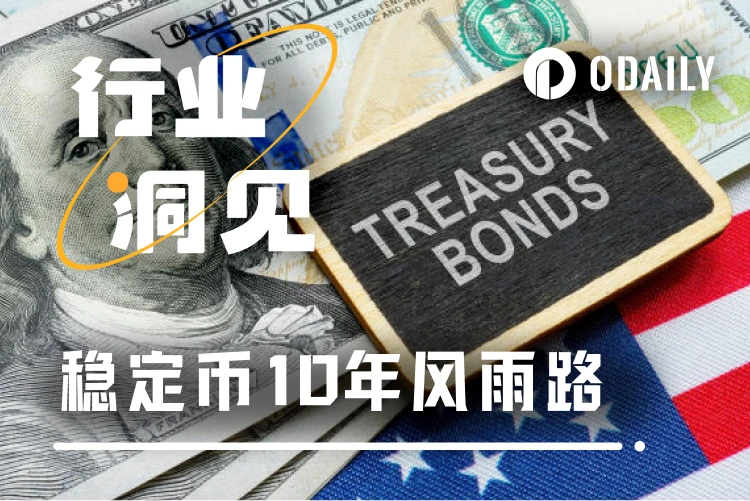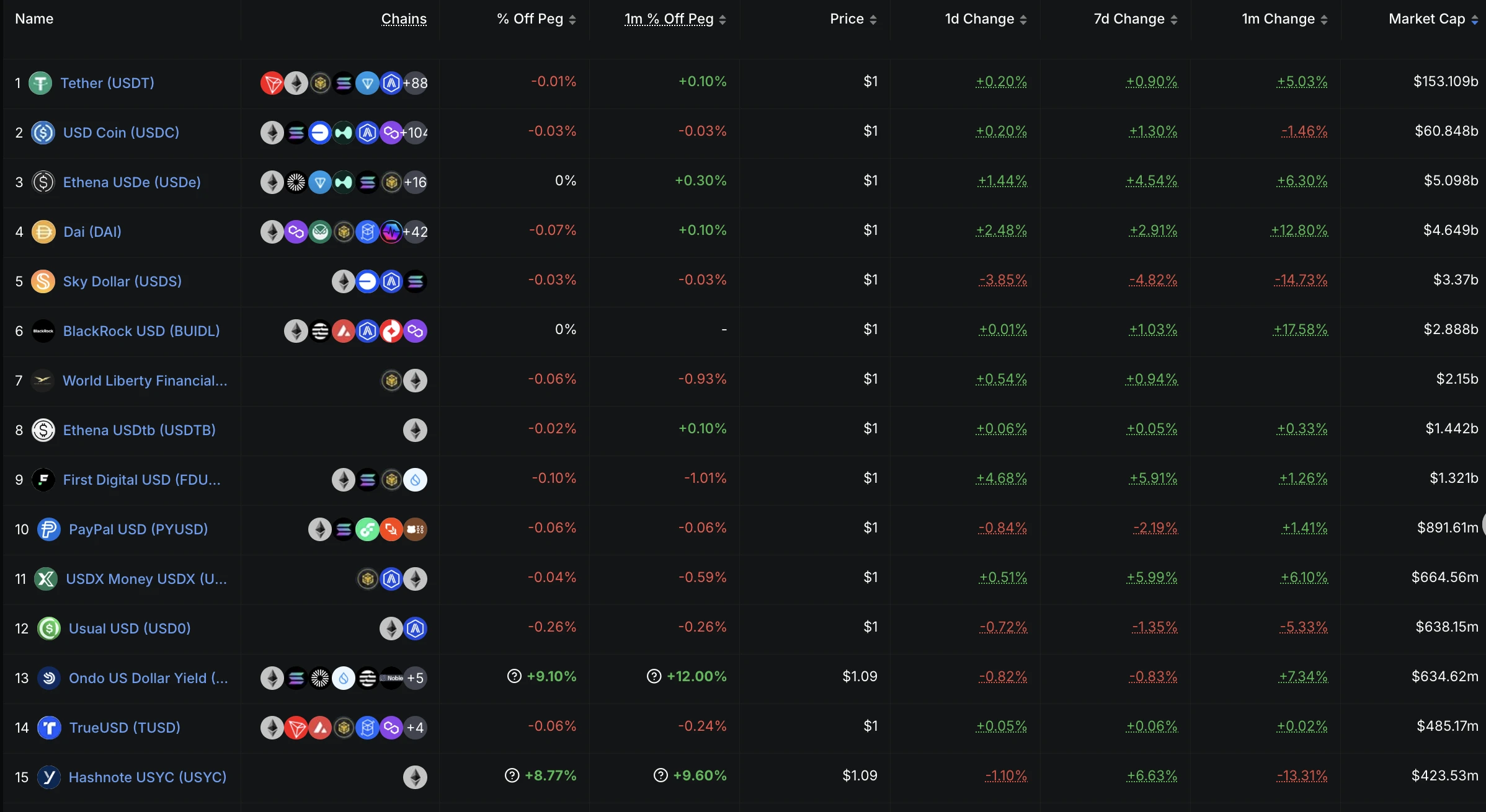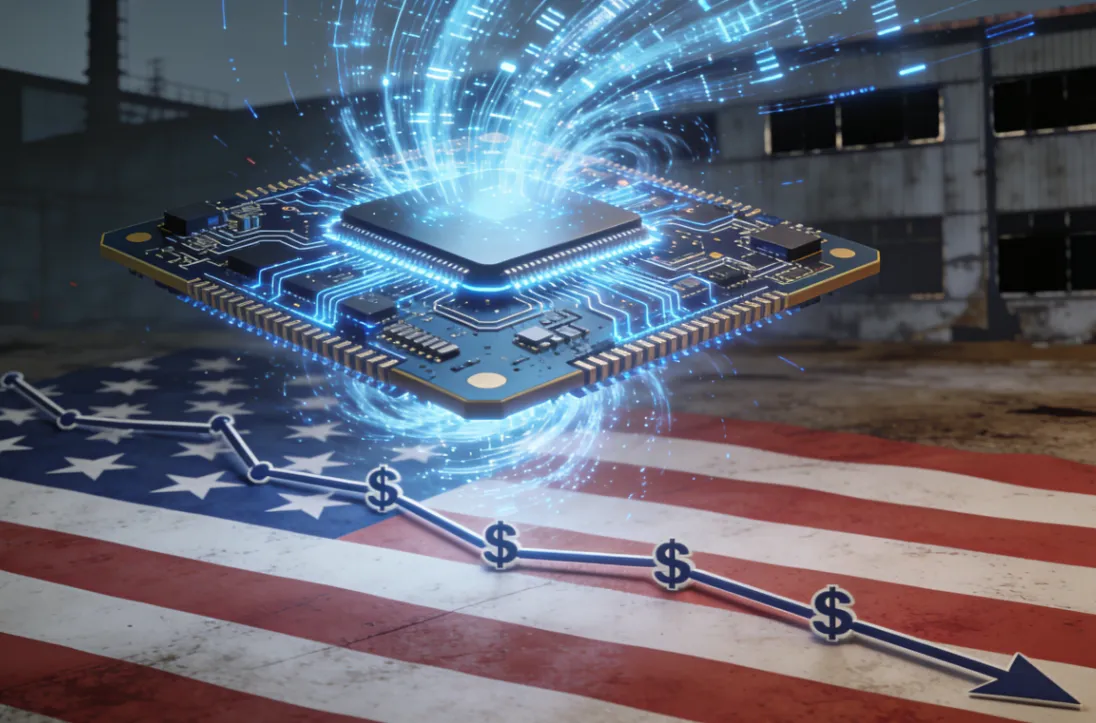Original|Odaily Planet Daily (@OdailyChina)

As the price of BTC approaches a new high of $112,000, the U.S. stablecoin regulatory bill, the "Genius Act," is also gearing up. The crypto industry is further deeply coupled with the global economic system, and at this moment, people realize: the payment system is the crown of the crypto industry, and BTC is the jewel on that crown. This is also one of the reasons why PayFi, U-Cards, and RWA have become battlegrounds for exchanges and crypto projects as the mainstreaming of crypto assets accelerates. In the future, independent payment solutions based on segmented industries in the real world may become possible.
In this article, Odaily Planet Daily will briefly outline and discuss the past development history and future direction of the stablecoin industry.
The Great Change in Stablecoins: The Crypto Decade Originating from USDT (2014-2024)
In 2008, an article titled “Bitcoin: A Peer-to-Peer Electronic Cash System” appeared on the P2P Foundation website, authored by Satoshi Nakamoto, who is later revered as the founding father of the crypto industry. At that time, the world economy was slowly rebuilding after the 2008 subprime mortgage crisis, which had erupted due to severe dollar inflation. Undoubtedly, the original intention of BTC's birth was to solve the chronic problems of a centralized currency supply system and the lengthy, rigid, and inflexible global financial payment system.
However, contrary to the expectations of many crypto OGs, including Nakamoto, it was not BTC, which raised the banner of decentralization, that ultimately fulfilled the "peer-to-peer payment wish of BTC," but rather various stablecoins that are strongly tied to the dollar and U.S. Treasury bonds.
The Rise of USDT: Rural Surrounding the City, Use Cases Capturing the Market
Looking at Tether's history, we can roughly categorize its development into a "three-step strategy":
(1) From Crypto Blood to Crypto Oil
In October 2014, Tether was founded, with its core product being the stablecoin USDT issued based on the Bitcoin Omni protocol;
In February 2015, USDT was launched on Bitfinex, the trading platform with the largest Bitcoin trading volume at the time. Tether's CEO Paolo Ardoino is also the CTO of Bitfinex, and the two companies have long been viewed as "brother companies" due to their highly overlapping team members;
In 2018, Tether issued USDT based on the ERC20 standard on Ethereum, which is compatible with the original protocol and further enhanced its usability. Since then, Tether and USDT have gradually penetrated the crypto ecosystem like crypto blood, riding the wave of Ethereum's ecosystem development.
In 2019, TRON successfully merged with Tether, and since then, TRON has been racing ahead on the path of the stablecoin network's leading ecosystem, with the former becoming a heavyweight cooperative network accounting for over one-third of USDT's issuance. TRON's founder, Justin Sun, also made TRON one of the crypto infrastructure projects through an early distribution strategy.
It can be said that after the early redemption fee profit model was successfully validated, Tether had established its competitive barrier and business model through USDT, gradually becoming a trading equivalent like crude oil in the crypto ecosystem.
(2) From Crypto to Beyond Crypto
As we entered 2020, with the explosion of DeFi Summer, the market capitalization of stablecoins soared, and naturally, Tether and USDT seized the first-mover advantage. Tether's ambitions also gradually expanded beyond the crypto world into a larger scope.
As mentioned in our previous article, “The Market Value of the 'First Stablecoin' USDT Hits New Highs, Unveiling the Billion-Dollar Business Empire Behind Tether”: the use cases of USDT include being a general equivalent for cryptocurrencies, an alternative currency in inflationary regions, and a major payment tool for cross-border trade, among others. Additionally, after gaining massive profit returns, Tether further extended its reach into the global economic system through various investments, acquisitions, U.S. Treasury bond reserves, gold reserves, and BTC reserves, strengthening its connections beyond the crypto world. This is also one of the important reasons why USDT has been criticized as a "money laundering accomplice." After all, money never sleeps, and neither does USDT.
(3) From Payment Means to Value Storage
In 2021, after reaching a settlement with the New York Attorney General's Office (NYAG) and paying a $41 million fine to the U.S. Commodity Futures Trading Commission CFTC, Tether cleared its biggest obstacle to development. Since then, the value of USDT began to transition from a payment means to a value storage. After experiencing previous de-pegging incidents and reserve asset FUD, USDT issued by Tether became one of the few assets to hoard in the high-risk, high-volatility crypto market—another being BTC. Especially with the continuous purchases of U.S. Treasury bonds, its market position and brand recognition, which are pegged 1:1 to the dollar, have ultimately gained recognition from the crypto community, and the annual profits of tens of billions to over a hundred billion dollars have provided it with the confidence to claim the title of "twin dollar."
From once wildly growing crypto projects to now the established stablecoin leader, Tether and USDT have staged a spectacular drama of "rural surrounding the city, use cases capturing the market."
The Second Path of USDC: Centralized Development, Crypto IPO
Unlike Tether's USDT, Circle, backed by Coinbase, and its stablecoin USDC have taken a completely different path: everything is built for compliance.
Aside from the usual U.S. Treasury bond reserves, Circle's profit model is undoubtedly more fragile compared to Tether, as partners like Coinbase and Binance can consume a large portion of its profits. This is also one of the important reasons for its push for a crypto IPO after Trump took office—only by seizing the existing advantages of compliance and timely expanding its base from the crypto field to the traditional financial market can it gain stronger bargaining power and secure more robust funding, resources, and even policy support in subsequent market competition.
For more information about Circle, see Odaily Planet Daily's article “Circle IPO May Be Delayed, What Is the Valuation of the 'First Stablecoin Stock'?”.
Aside from the two market giants, USDT and USDC, competition for this lucrative "cake" has undoubtedly become increasingly fierce, with other stablecoin projects such as TrueUSD (TUSD), Circle Coin (USDC), Gemini Dollar (GUSD), Paxos (PAX), and currently still occupying a certain market share like DAI (MakerDAO), USDS (Sky), USDe (Ethena), PYUSD (PayPal), RLUSD (Ripple), USD1 (WLFI), etc. Who can truly stand undefeated or become the ultimate winner remains to be tested by regulatory policies and verified by time.

https://defillama.com/stablecoins
The U.S. "Genius Act" Sparks a Wave of Stablecoin Regulation: Completing the Last Piece of the Crypto Regulatory Puzzle
For all stablecoin projects, the recent Senate vote to "release" the stablecoin regulatory bill, the "Genius Act," is undoubtedly the sword of Damocles hanging over their heads. After Bitcoin spot ETFs and Ethereum spot ETFs have become part of traditional institutional capital allocation, this bill will undoubtedly complete the last piece of the Trump administration's crypto regulatory puzzle.
Specifically, in my personal view, the main purposes of the Genius Act are:
1. Ensure Dollar Hegemony. As a staunch advocate of "America First," the core goal of Trump and his government members, as well as Democratic members, remains to ensure the political and economic hegemony of the U.S., and the primary medium to achieve this is the dollar. Stablecoins pegged 1:1 to the dollar are undoubtedly one of the best tools.
2. Ensure the Stablecoin System Operates Under U.S. Jurisdiction. With a crypto-friendly environment now established, the U.S. is becoming a hotbed for crypto again, which will help the U.S. gain the initiative in the operation of the stablecoin system and the formulation of regulatory policies. At that time, similar to past foreign trade regulations, the U.S. will achieve comprehensive suppression of the global crypto economy and even cross-border trade through the stablecoin system.
3. Ensure Partial Security of the Crypto Financial System. This is also one of the important reasons why the Genius Act has received positive affirmation from many industry insiders and representatives of the traditional financial industry. Mandatory 1:1 asset reserves, strict prohibitions on misappropriation and re-pledging, monthly reserve reports with external audits, banking-level regulatory licenses for circulation market caps exceeding $10 billion, and the introduction of custodial institutions will add layer upon layer of insurance locks to the stablecoin sector. Of course, whether the big door behind the locks is solid is another question.
4. Greatly Expanding the Imagination Space of RWA, Closer Integration of On-Chain and Off-Chain Worlds. It can be said that stablecoins are the earliest RWA products, and the real-world asset they are tied to is the U.S. dollar. With the gradual implementation of the "Genius Act," the introduction and implementation of RWA-related legislation is also believed to be just around the corner. Compared to the current cryptocurrency market of over $30 trillion, this will represent an asset market worth hundreds of trillions of dollars.
Thus, the "Genius Act" will provide policy dividends for the U.S. government and the development of the digital economy, tapping into the potential of digital assets and encouraging the growth of crypto projects, giving rise to a batch of promising crypto projects and their underlying teams. The geniuses carrying the future of crypto may be hidden within.
The New Decade of Crypto: Finance Remains the Main Line, Crypto Concept Stocks and Stock Tokenization Have Great Potential
Looking ahead to 2025, the proportion of the crypto community in the global population has reached a peak, and cryptocurrency investment is still a game for a minority; however, on the other hand, in the commercial society, everyone has a natural demand for commodity exchange. These commodities can be tangible products or items, as well as intangible labor, virtual assets, digital IPs, etc. Therefore, based on this demand, more convenient, low-cost, and safer crypto payments will eventually permeate everyone's daily life.
In the next decade (2025-2035), the main line of the cryptocurrency industry may gradually shrink from multiple tracks and fields that have been disproven in the market to the financial sector. Consequently, crypto concept stocks generated from crypto IPOs and stock tokenization will become a new battleground for the crypto industry.
In certain respects, the stocks of currently listed companies such as Strategy, Sol Strategy, and Metaplanet have already become "dualistic carriers" of crypto concept stocks and stock tokenization. As the value of BTC is recognized on a larger scale and at higher prices, their potential value will also be further released.
Of course, within the visible range, the ETH ecosystem and Solana ecosystem remain the mainstream choices in the industry today.
Conclusion: Nakamoto's "Will" Finally Realized, but the Means of Realization Contradict the Original Intent
In conclusion, we still cannot avoid the figure of Bitcoin's founder, Satoshi Nakamoto, who has disappeared from the market's view. The ultimate embodiment of his "BTC peer-to-peer payment system" is undoubtedly stablecoins.
However, it is somewhat ironic that he, who harbored the spirit of crypto punk, may not have anticipated that BTC, born to combat the unchecked and increasingly expanding minting power of authoritarian governments, would instead give rise to a stablecoin system that is more "dollar-centric and backed by U.S. Treasury bonds."
Recommended Reading:
TRON's "Marriage" with Tether, Complementing Shortcomings
Unveiling Tether's Rise: The Undercurrents and Manipulation in the Crypto Market
免责声明:本文章仅代表作者个人观点,不代表本平台的立场和观点。本文章仅供信息分享,不构成对任何人的任何投资建议。用户与作者之间的任何争议,与本平台无关。如网页中刊载的文章或图片涉及侵权,请提供相关的权利证明和身份证明发送邮件到support@aicoin.com,本平台相关工作人员将会进行核查。



